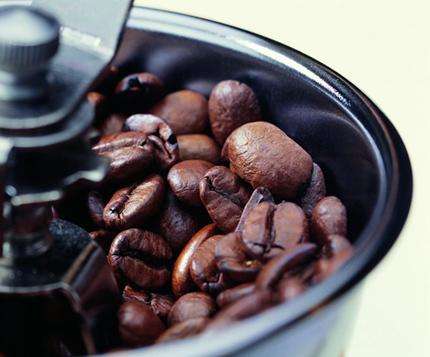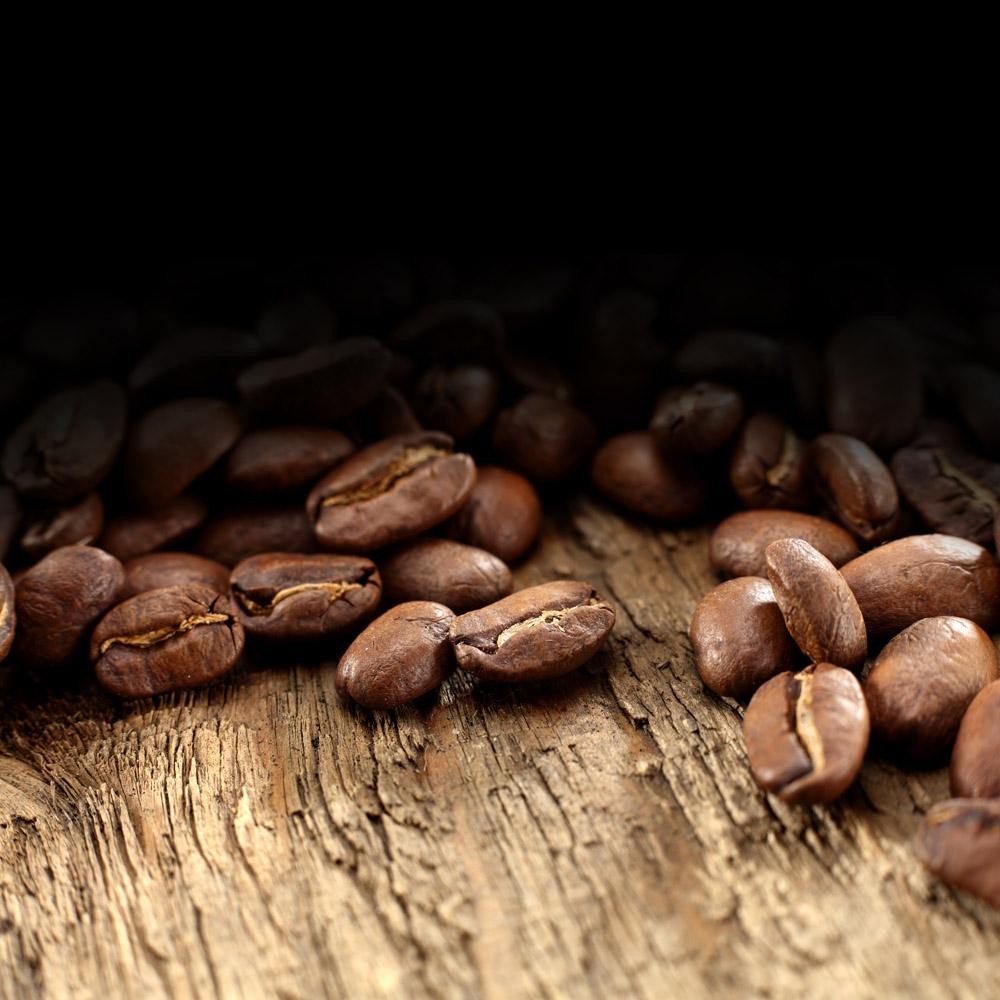The tasty Robusta recommends
Follow the caf é (Wechat official account vdailycom) and found that Beautiful Cafe opened a small shop of its own.
Like other coffee-growing regions in the world, Indian farmers regard robusta beans as the last choice to grow coffee varieties, choosing to grow robusta beans only when the soil is not suitable for growing Arabica beans, because robusta beans are undervalued on the New York Stock Exchange (NYSE) and the London Financial Exchange (LIFFE). The LIFFE contract for Robusta beans can have 450g of defective products per 500g sample, which is more than ten times the amount of C-grade Arabica beans, which is why Robusta beans usually cost less than half as much as C-grade Arabica beans.

To the shock of his family and nearby plantations, he will set aside 6 hectares (15 acres) of land on the plantation Sethuraman Estate that used to grow high-quality Arabica and switch to robusta beans, which will later reach 350 acres. He realized that it was artificially low market standards that undervalued robusta beans, not robusta beans themselves.
Because there is no stimulation of economic interests, most farmers who grow robusta beans are reluctant to improve the quality standards of farming and processing, and most people pay attention to robusta beans at a minimum, as long as they meet the minimum amount of investment. it's enough to barely enter the market. Without the return mechanism of the boutique coffee market like Arabica beans, Robusta beans have always been at the bottom of market competition, and their value, like most cheap goods with short-term and high returns, has been in a spiral for a long time.
Although robusta beans have more room to rise in terms of potential growth than Arabica beans, the imbalance in economic returns has blocked the road to scientific research. Compared with Arabica beans, robusta beans have more relaxed climate conditions and are easy to cross-pollinate. Even without human intervention, the natural improvement of robusta beans can be achieved by maintaining a more complex regional gene pool. Not taking into account the higher temperature tolerance, natural pest prevention and high yield of robusta beans, its genetic diversity alone makes it a coffee variety with strong survival adaptability. therefore, it is better for us to deal with the challenges of global warming and the increasing shortage of coffee beans.
Long before I tasted Robusta coffee beans in 2007, Coffee Quality Institute (CQI: coffee quality Association) realized these problems and Robusta's potential for improvement. On the basis of evaluating the Q Coffee System (Q Coffee rating system) used in Arabica beans, the Coffee quality Association has established a new rating standard for evaluating robusta beans-R Coffee System, which now plays an important role in training Robusta growers and buyers around the world. For coffee growers and distributors, the establishment of Robusta Coffee rating system is a milestone and the first step to improve the quality and value of Robusta Coffee. You know, robusta beans already account for 40% of the coffee market supply worldwide.
The Coffee quality Association is not the only one working hard. In coffee producing areas, many organizations, institutions and coffee growing associations or groups dedicated to food safety are also paying attention to Robusta beans. Because robusta beans are more resistant to high temperatures than Arabica beans, and their maturity is 2-3 months longer than Arabica beans. Therefore, it is possible to consider planting in areas with lower elevations than the existing coffee plantations, and the harvest season is longer for secondary harvest. In this way, additional income can be generated from the use of existing land and the technology of coffee growers to make up for the shortfalls originally between the two harvest seasons.
When you visit the Sethuraman Estate plantation in Nishant, just as I visited it for the first time more than a year after dinner with Nishant, it is not easy to tell whether it is the Robbins Tara Plantation or the Arabica Plantation from the complex operations and equipment. With neatly manicured coffee trees, well-maintained drying boards, scientific drip irrigation techniques and environmentally friendly water conservation measures, and the ability to produce 100% of their own natural organic fertilizers, it can be an example of strict land management advocated by COE (Cup of Excellence).
Nishant's efforts are reflected not only in the taste of coffee, the first R Coffee System evaluation certificate issued by the Coffee quality Association in early 2012 and has actually become a commercially high quality R Coffee, but also in his company's performance. In the process of dealing directly with buyers around the world, his coffee continues to maintain a high price, even higher than the price of C-grade Arabica beans and other boutique coffee. I can't help thinking: if the taste and price of high-quality robusta beans are similar to those of fine Arabica beans, how can we ignore them for so long?
What if Robusta also has a good flavor?
Interestingly, a raw bean merchant friend brought a Robusta with R Grader ranking No. 2 in the world. Of course, curiosity came to me. Asked the price is 3-4 times of the general Robusta price, but still introduced, in the baking process of dehydration and drying process is not that bad potion leather smell but a touch of grass smell, the bean point is about close to the second explosion before the bean.
R03
In the cup test, I used the hand flushing method, 18 grams against 300 grams of water, freshly ground coffee powder other I do not like, because the flavor of Quaker. . Originally wanted to say that maybe I was looking forward to it too much, when I started to taste ~ when I was in the mouth! The acid is much lower than the first grade acid in Q certification, and I was surprised by the cleanliness of the taste. The sweetness is obvious with nuts, cashews, cream and a hint of chocolate, but the flavor is a bit monotonous without acid.
To me, this article is not a tribute to Robusta, but in the world of coffee, many things are not absolute, and there are a lot of undiscovered things waiting for us to discover it.
Important Notice :
前街咖啡 FrontStreet Coffee has moved to new addredd:
FrontStreet Coffee Address: 315,Donghua East Road,GuangZhou
Tel:020 38364473
- Prev

Is Robusta a subspecies?
Following Cafe Review (Wechat official account vdailycom) found that Beautiful Cafe opened a small shop of its own. Is Robusta a subspecies? the Robusta variety is a low-altitude sloping product, oval in the shape of beans. The caffeine content is more than twice that of Arabica varieties, with poor alcohol and bitterness, and is mostly used to make instant coffee powder or blend into cheap mixed coffee. Because it has strong survivability and is easy to plant.
- Next

What are the categories of Robusta coffee beans
Following Cafe (official account vdailycom of Wechat) found that Beautiful Cafe opened a small shop of its own. In fact, Robusta also falls into many categories and can't generalize or pursue price blindly. Among the big coffee countries, Robusta is a major producer of Vietnam, Brazil, Indonesia, India and so on. Like Arabica, Robusta in each country has a corresponding hierarchy.
Related
- Detailed explanation of Jadeite planting Land in Panamanian Jadeite Manor introduction to the grading system of Jadeite competitive bidding, Red bid, Green bid and Rose Summer
- Story of Coffee planting in Brenka region of Costa Rica Stonehenge Manor anaerobic heavy honey treatment of flavor mouth
- What's on the barrel of Blue Mountain Coffee beans?
- Can American coffee also pull flowers? How to use hot American style to pull out a good-looking pattern?
- Can you make a cold extract with coffee beans? What is the right proportion for cold-extracted coffee formula?
- Indonesian PWN Gold Mandrine Coffee Origin Features Flavor How to Chong? Mandolin coffee is American.
- A brief introduction to the flavor characteristics of Brazilian yellow bourbon coffee beans
- What is the effect of different water quality on the flavor of cold-extracted coffee? What kind of water is best for brewing coffee?
- Why do you think of Rose Summer whenever you mention Panamanian coffee?
- Introduction to the characteristics of authentic blue mountain coffee bean producing areas? What is the CIB Coffee Authority in Jamaica?

